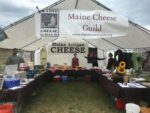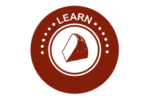Olivia Barber
Cheese Maker’s Resource Conference Article
April 8, 2019
This February I was fortunate enough to receive a scholarship to attend the annual Cheese Maker’s Resource Conference in New Holland, PA. This was my first time attending any cheese making conference.
At the beginning of the conference we were all given a 3 ring binder. This binder contained all of the presentations and resources from the event. That means that even if you couldn’t attend a session, you still had all of the notes from that session. This is a wonderful resource that I will use over and over again.
For the first two sessions, I attended a talk about Marketing and Agri-tourism. At Fuzzy Udder Creamery, I am the marketing and wholesale manager. In the future I hope to integrate more Agri-tourism into our farm. It was very interesting to see what other farms are doing to add agri-tourism. I walked away with new ideas that I hope to implement at Fuzzy Udder in the future.
At the last minute, a spot opened up in the hands-on cheese making class with Fons Smits and I was able to be part of that class. The first day we went over the cheese making process of a washed curd cheese like a gouda or baby swiss. We went over the basic cheese making process of a washed curd cheese, what cultures to use and renneting. We also went over how to troubleshoot your cheese. For example if your cheese is too sour, you might need to increase the amount of washing water and the temperature of the water.
On the second day, we held the hands on part of the class, where we actually made cheese. We made a gouda style cheese. It is very interesting to learn from different cheese makers. Each one has a very different style. Last year I took a class from Ivan Larcher, who doesn’t brine his cheeses at all and advises against it. On the contrary, Fons brines almost all of his cheeses and highly recommends it. I think learning from many different cheese makers allows you to find the process and cheese that works in your facility and with your milk. I left the workshop inspired and excited to make cheese!
One of my favorite parts of the conference was meeting and socializing with other cheese makers. I met many cheese makers from across the country. Some had vastly different operations than ours and some were similar. It was wonderful to network with people in the same field and make lasting connections.
And of course at a cheese making conference there was lots of cheese! It was great to try so many different types of cheese. They held a Cheese Extravaganza one night, that featured many recipes using cheese as well as cheese pairings. It was exciting to try Parish Hills Cornerstone cheese. There were cheese soups, cheese sliders, cheese balls, basically anything you could make with cheese! They also gave you all of the recipes so you could go home and make your favorites.
Overall, I was highly impressed by the Cheese Maker’s Resource Conference. I hope to make it an annual event and attend every year.

